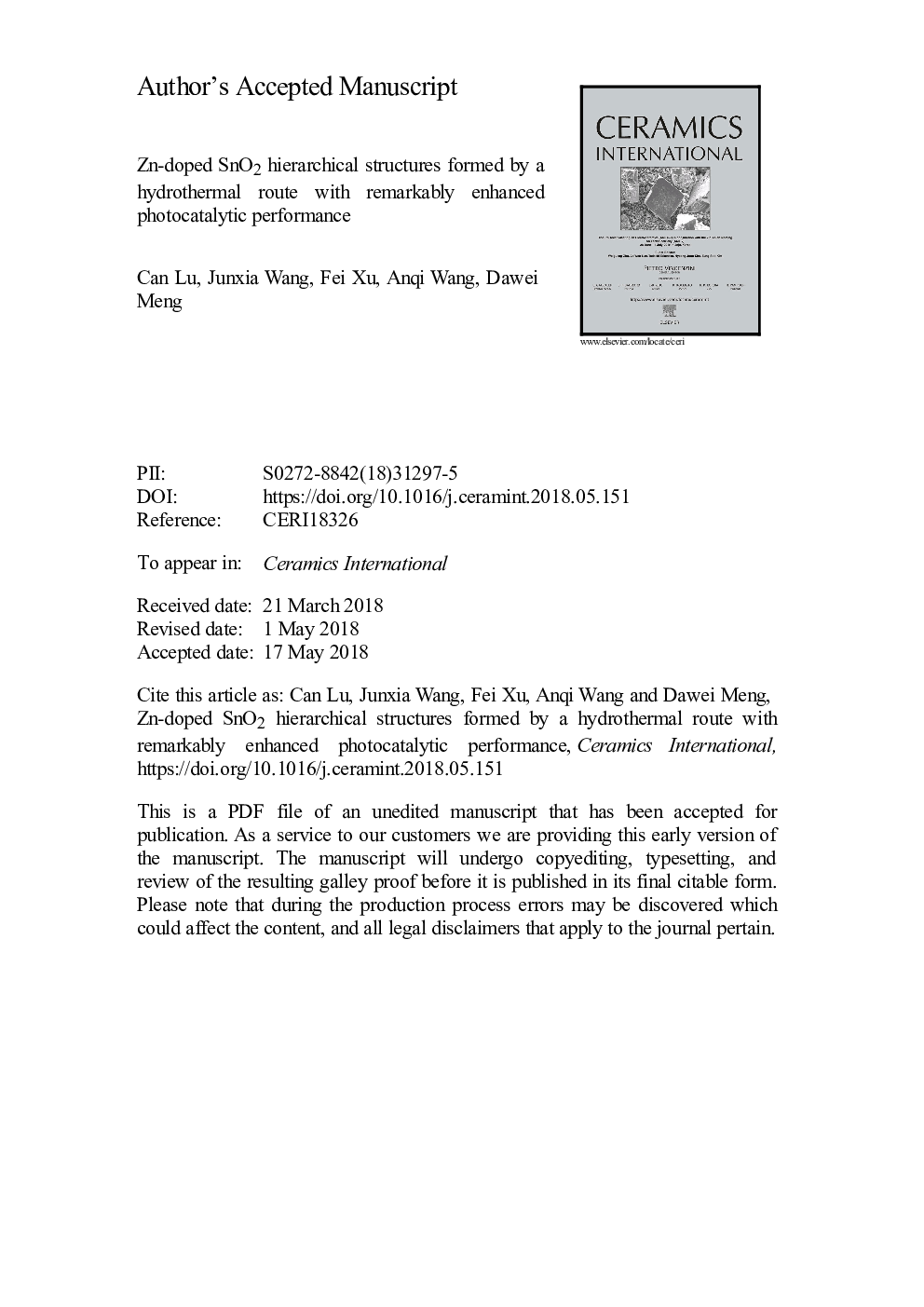| Article ID | Journal | Published Year | Pages | File Type |
|---|---|---|---|---|
| 7886082 | Ceramics International | 2018 | 32 Pages |
Abstract
Zn-doped SnO2 hierarchical structures were synthesized by a facile and low-cost hydrothermal route using tin chloride and zinc nitrate as inorganic sources. The Zn-doped SnO2 hierarchical structures were pompon-like and composed of numerous homogenous nanocones which were radiated from one center. The length and diameter of nanocones were gradually decreased with the increase of doping amount, indicating the morphology of the samples could be well controlled by varying the Zn2+ concentration. Additionally, the feasible growth process of obtained samples was discussed on the basis of the habits of nucleation and crystal growth. The photocatalytic performances of Zn-doped SnO2 hierarchical structures were systematically investigated in the degradation of methylene blue (MB), methyl orange (MO), rhodamine B (RhB) and Congo red (CR). Compared with pure SnO2, the 4.0â¯wt% Zn-doped SnO2 hierarchical structure presented superior photocatalytic ability, which could be mainly attributed to both present oxygen vacancies and doped Zn2+ centers. At last, the possible photocatalytic mechanism was studied by means of the active species trapping experiments as well as the calculated energy band structures.
Related Topics
Physical Sciences and Engineering
Materials Science
Ceramics and Composites
Authors
Can Lu, Junxia Wang, Fei Xu, Anqi Wang, Dawei Meng,
